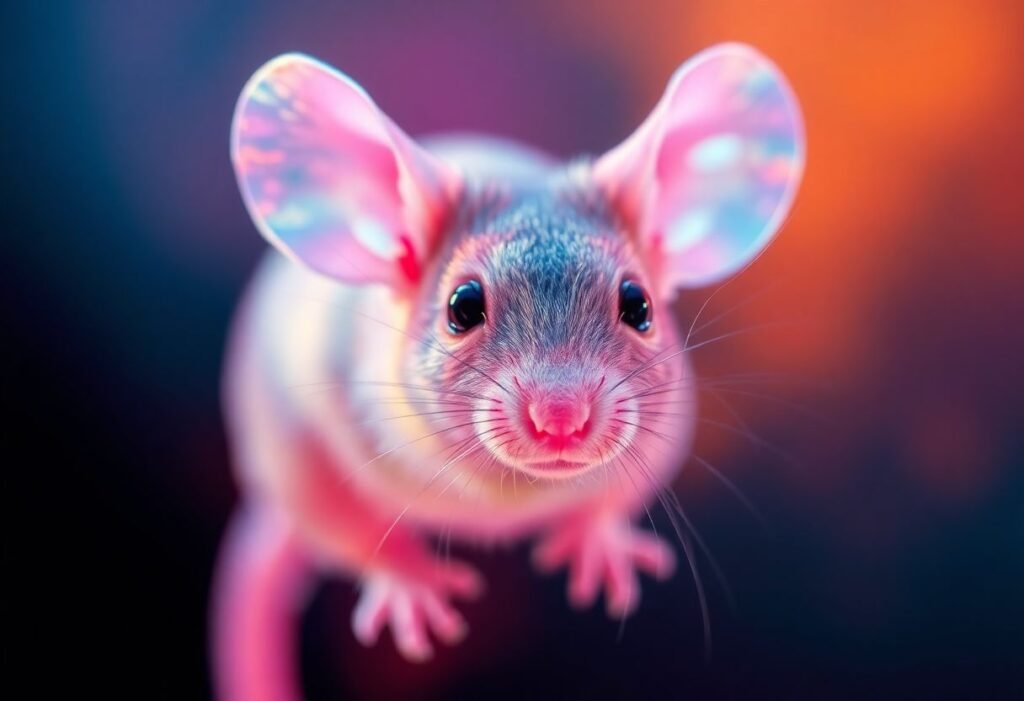Recent breakthroughs in biological research have unveiled innovative techniques that enable scientists to visualize internal structures of living organisms. One such advancement involves the application of a common food dye to mice, which remarkably renders them transparent. This discovery holds significant implications for biomedical research, allowing for non-invasive observation of physiological processes.
Revolutionizing Biological Research with Transparency
Stanford University researchers have made a remarkable discovery by using a simple food dye, typically found in the kitchen, to enhance transparency in living mice. This technique involves applying the dye to the skin, allowing scientists to explore internal organs such as the heart and lungs without invasive procedures. The implications are profound for biologists aiming to study anatomy, pathology, and the effects of pharmaceuticals. With the ability to visualize complex biological systems in real-time, researchers can gain unprecedented insights into mammalian physiology.
Understanding the Mechanism Behind Transparency
The transparency achieved through this innovative method is attributed to the unique chemical properties of the food dye. By interacting with the tissues and fluids within the body, the dye alters the way light passes through, effectively making the internal structures visible. This process not only aids in the observation of organs but also facilitates studies in areas such as tissue engineering, regenerative medicine, and cancer research. As a result, the potential applications of this technique are vast and varied.
Applications in Neurological and Vascular Research
This new method of transparency is especially beneficial for studying neurological and vascular systems. By allowing researchers to observe blood vessels and neuronal pathways, the dye can help illuminate changes in these systems that may lead to disease or dysfunction. Understanding these intricate networks is crucial in developing new treatments and interventions for conditions like Alzheimer’s disease, stroke, and other neurological disorders.
Potential Ethical Considerations in Animal Research
As with any innovative research technique, ethical considerations must be taken into account. The use of living animals in research raises questions about welfare and treatment standards. Utilizing the transparency method, researchers can monitor the health and reactions of the mice with minimal discomfort, potentially leading to more ethical practices in the laboratory. This opens discussions on refining methodologies to prioritize the well-being of test subjects while advancing scientific knowledge.
Future Prospects of Non-Invasive Research Techniques
The utilization of food dyes in creating transparent animals marks a significant step forward in non-invasive research methods. As technology evolves, researchers are exploring further applications of similar techniques, aiming to develop even more sophisticated ways to examine biological processes. The potential for translating these innovations to larger animal models—and ultimately to humans—could transform the landscape of medical research and diagnostics.
Conclusion: A Clear Path Ahead
The discovery that common food dyes can make living mice transparent not only enhances the capability for biological research but also sets a precedent for future innovations in the field. As researchers continue to refine this method and explore its possibilities, the prospects for further understanding complex biological systems grow exponentially. This advance encourages a new era of research where visibility into the interior workings of organisms becomes routine, leading to breakthroughs that can impact areas ranging from biomedicine to therapeutic interventions.
Disclaimer: This article is for informational purposes only and should not be construed as medical advice.





















